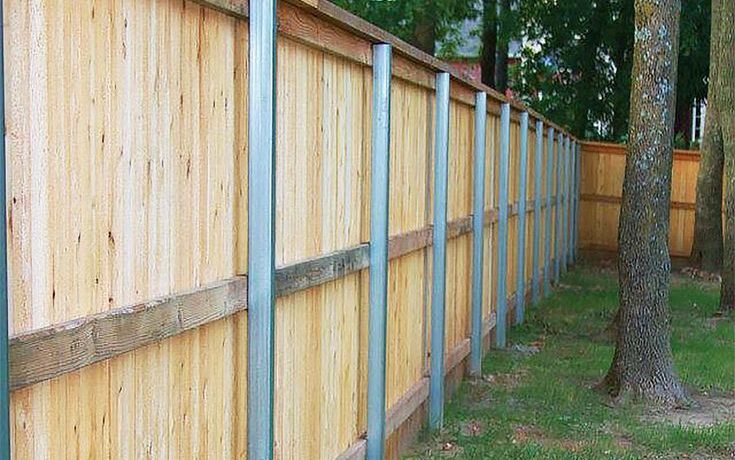All Categories
Featured
When it pertains to keeping a wooden fence, house owners frequently face the decision of whether to repaint or stain. Both options have their pros and disadvantages, and the option eventually depends upon your visual preferences, the type of timber, and exactly how much maintenance you want to commit to. Below's a detailed comparison to aid you make an educated decision.
The Essentials of Paint and Discoloration
Paint includes covering the timber with an opaque layer of color. It offers full coverage, concealing the wood grain while offering exceptional defense against ecological elements.
Discoloring passes through the wood, enhancing its natural elegance while including a protective layer. Relying on the kind, spots can vary from transparent to solid, allowing varying degrees of timber grain visibility.
Benefits And Drawbacks of Painting
Pros:
Vast Array of Colors: Repaint deals endless shade choices, allowing you to match your fence to your home's exterior or personal style.
Longer Lasting: Top notch outside paint can last approximately 5-7 years, requiring less frequent reapplication.
Superior Protection: Repaint forms a thick, strong obstacle versus dampness, UV rays, and parasites.
Disadvantages:
Breaking and peeling: With time, paint can peel or break, specifically in locations with extreme weather condition problems.
Hides Natural Timber Elegance: If you enjoy the all-natural grain of wood, paint might not be the most effective choice.
Higher Upkeep: Repainting calls for removing the old paint, which can be labor-intensive.
![]()
Benefits And Drawbacks of Discoloration
Pros:
All-natural Appearance: Stains preserve and enhance the natural elegance of the timber, making it optimal for premium hardwood like cedar or redwood.
Much Easier to Reapply: Unlike paint, stains don't crack or peel. Reapplying tarnish commonly calls for much less surface preparation.
Adaptable End Up Alternatives: Discolorations been available in clear, semi-transparent, and solid ranges, offering various degrees of protection.
Disadvantages:
![]()
Much Shorter Lifespan: Discolorations, semi-transparent and especially clear ones, might need reapplication every 2-3 years.
Limited Color Choices: While spots provide all-natural tones, they do not have the broad color combination offered with paint.
Less Protective: Spots pass through the timber however don't offer as thick an obstacle as paint, making them somewhat much less safety against extreme weather.
Aspects to Think About
Visual Preferences: If you desire dynamic colors and total coverage, paint is the means to go. For a rustic and natural appearance, go with discolor.
Timber Kind: Premium woods with lovely grains gain from discoloration, while lower-grade woods can be repainted for a sleek look.
![]()
Climate: In humid or damp environments, paint's thicker obstacle may provide much better protection. In moderate or completely dry climates, spots can be adequate.
Maintenance Commitment: Paint entails much less constant reapplication however even more effort throughout touch-ups. Discoloration requires regular upkeep however is less complicated to manage.
Final Ideas
Both painting and staining can efficiently safeguard and enhance your wooden fencing. The best choice relies on your concerns, whether they lean towards aesthetic appeals, sturdiness, or simplicity of upkeep. By understanding the advantages and drawbacks of each, you can pick the finish that lines up with your requirements and ensures your fence stays a standout function of your home for many years to come.
The Essentials of Paint and Discoloration
Paint includes covering the timber with an opaque layer of color. It offers full coverage, concealing the wood grain while offering exceptional defense against ecological elements.
Discoloring passes through the wood, enhancing its natural elegance while including a protective layer. Relying on the kind, spots can vary from transparent to solid, allowing varying degrees of timber grain visibility.
Benefits And Drawbacks of Painting
Pros:
Vast Array of Colors: Repaint deals endless shade choices, allowing you to match your fence to your home's exterior or personal style.
Longer Lasting: Top notch outside paint can last approximately 5-7 years, requiring less frequent reapplication.
Superior Protection: Repaint forms a thick, strong obstacle versus dampness, UV rays, and parasites.
Disadvantages:
Breaking and peeling: With time, paint can peel or break, specifically in locations with extreme weather condition problems.
Hides Natural Timber Elegance: If you enjoy the all-natural grain of wood, paint might not be the most effective choice.
Higher Upkeep: Repainting calls for removing the old paint, which can be labor-intensive.

Benefits And Drawbacks of Discoloration
Pros:
All-natural Appearance: Stains preserve and enhance the natural elegance of the timber, making it optimal for premium hardwood like cedar or redwood.
Much Easier to Reapply: Unlike paint, stains don't crack or peel. Reapplying tarnish commonly calls for much less surface preparation.
Adaptable End Up Alternatives: Discolorations been available in clear, semi-transparent, and solid ranges, offering various degrees of protection.
Disadvantages:

Much Shorter Lifespan: Discolorations, semi-transparent and especially clear ones, might need reapplication every 2-3 years.
Limited Color Choices: While spots provide all-natural tones, they do not have the broad color combination offered with paint.
Less Protective: Spots pass through the timber however don't offer as thick an obstacle as paint, making them somewhat much less safety against extreme weather.
Aspects to Think About
Visual Preferences: If you desire dynamic colors and total coverage, paint is the means to go. For a rustic and natural appearance, go with discolor.
Timber Kind: Premium woods with lovely grains gain from discoloration, while lower-grade woods can be repainted for a sleek look.

Climate: In humid or damp environments, paint's thicker obstacle may provide much better protection. In moderate or completely dry climates, spots can be adequate.
Maintenance Commitment: Paint entails much less constant reapplication however even more effort throughout touch-ups. Discoloration requires regular upkeep however is less complicated to manage.
Final Ideas
Both painting and staining can efficiently safeguard and enhance your wooden fencing. The best choice relies on your concerns, whether they lean towards aesthetic appeals, sturdiness, or simplicity of upkeep. By understanding the advantages and drawbacks of each, you can pick the finish that lines up with your requirements and ensures your fence stays a standout function of your home for many years to come.
Latest Posts
The Benefits of Consistent Auto Maintenance at Montclare Auto Repair Keeps Your Wallet Happy
Published May 26, 25
1 min read
Unlock WyHy Federal Credit Union – Top Benefits for Your Future
Published May 25, 25
1 min read
Check Out Budget-Friendly Auto Repairs with Montclare’s Exclusive Service Specials
Published May 24, 25
1 min read
More
Latest Posts
The Benefits of Consistent Auto Maintenance at Montclare Auto Repair Keeps Your Wallet Happy
Published May 26, 25
1 min read
Unlock WyHy Federal Credit Union – Top Benefits for Your Future
Published May 25, 25
1 min read
Check Out Budget-Friendly Auto Repairs with Montclare’s Exclusive Service Specials
Published May 24, 25
1 min read